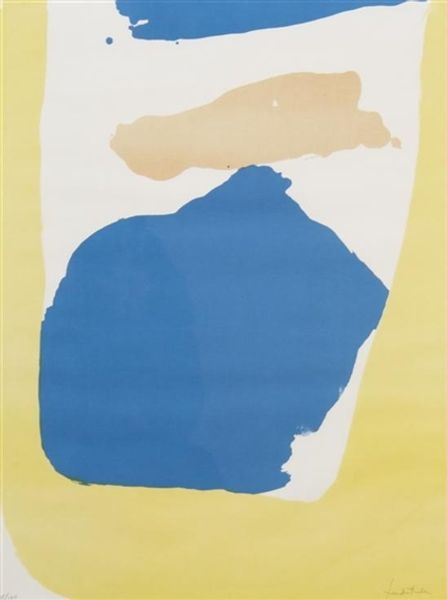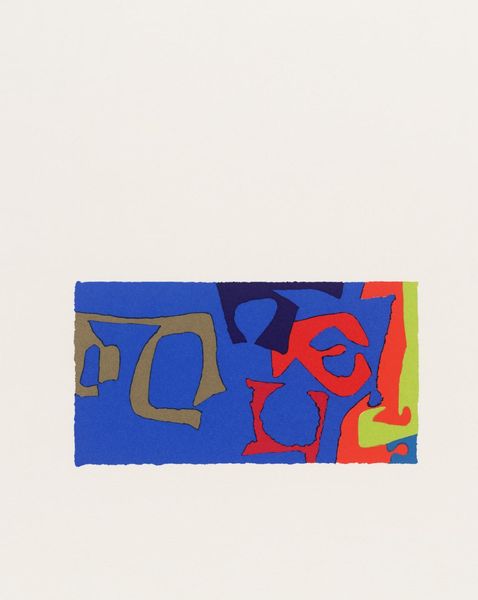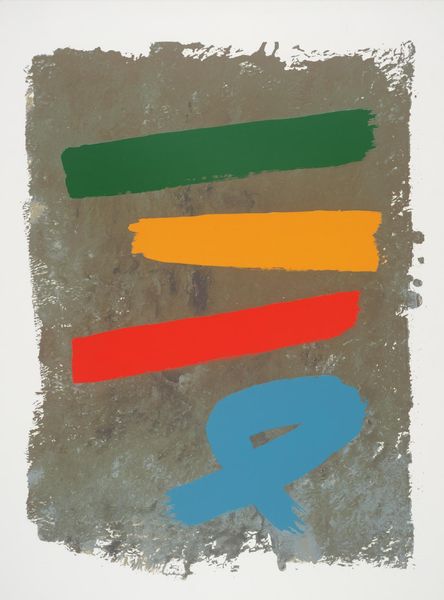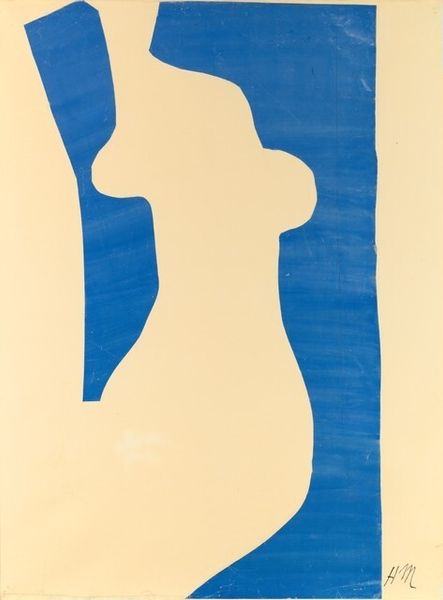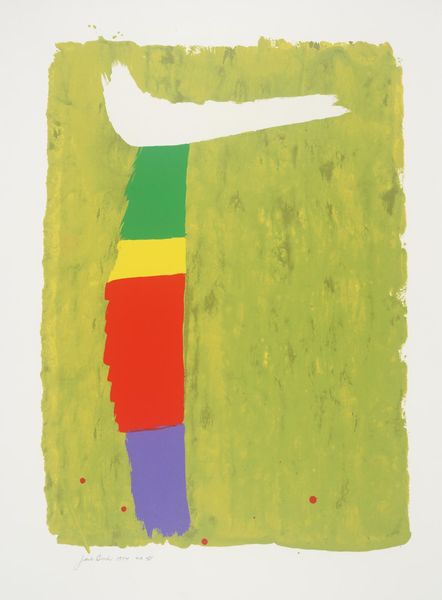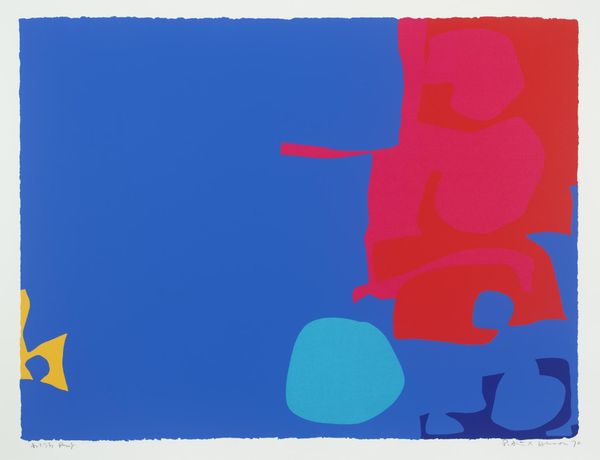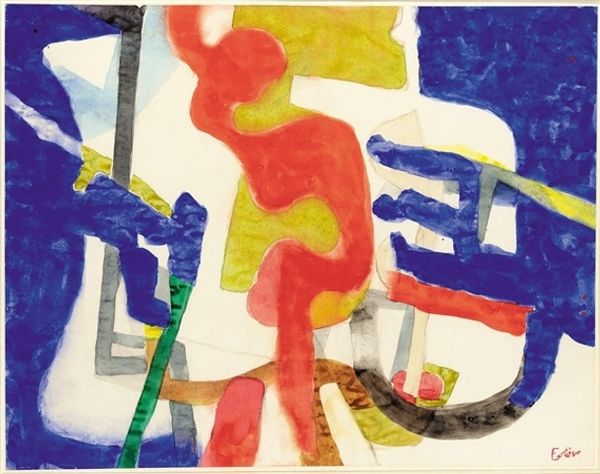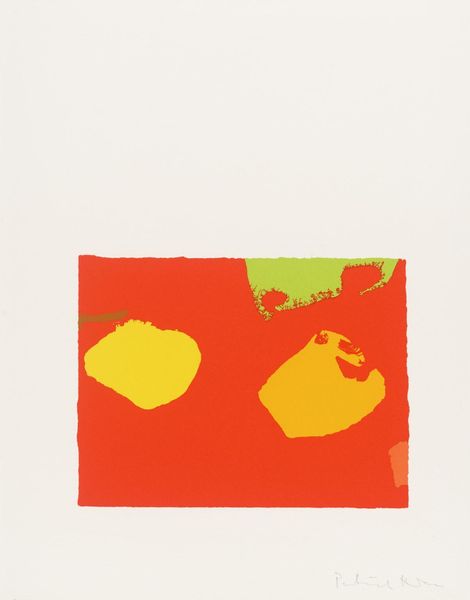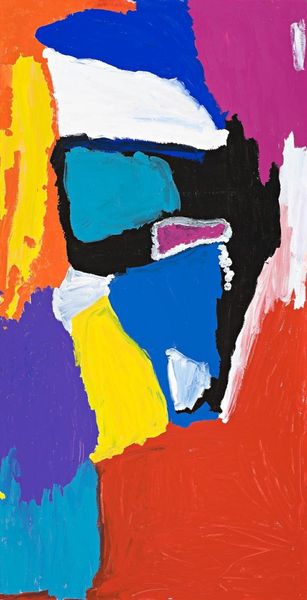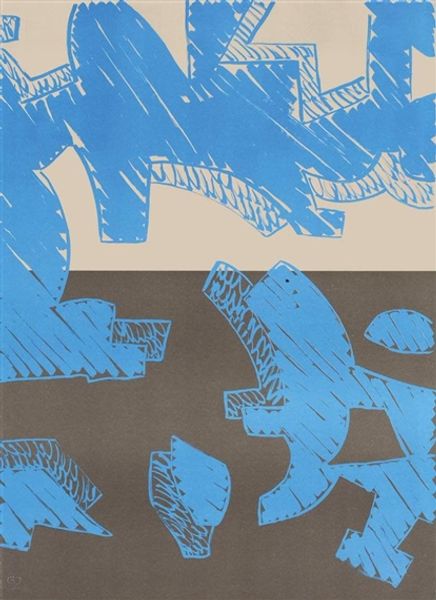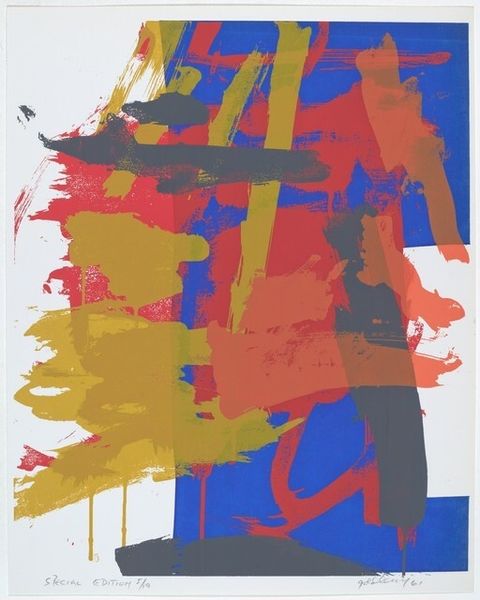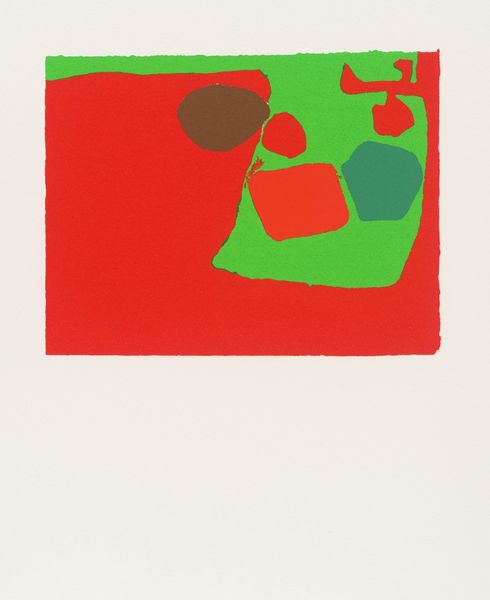
acrylic-paint
#
pop art
#
colour-field-painting
#
acrylic-paint
#
acrylic on canvas
#
geometric
#
abstraction
#
pop-art
Copyright: Helen Frankenthaler,Fair Use
Curator: Today we're looking at Helen Frankenthaler's "Air Frame" from 1965, an acrylic on canvas artwork. Editor: Immediately, I'm struck by the boldness of the colors. The vibrant blue is so dominant, and it's contrasted sharply with those shapes of green and yellow. There's a definite sense of Pop Art energy. Curator: Yes, and observe how Frankenthaler uses geometric abstraction in the Color Field style. These weren’t exactly shapes from the visible world, rather, these simple elements feel charged with emotional and symbolic meaning. Editor: I agree. In the context of the mid-60s, this work pushes against the formalism of the era, almost protesting through playful geometry. Frankenthaler was subtly inserting new visual language. Curator: Consider also the 'frame' itself. It is not a true frame; the white boundary, uneven and almost calligraphic, contains yet also hints at boundlessness. This echoes, in a way, the dialogue between the contained and the infinite we find in older traditions, even mandalas. Editor: I see that. It also brings into focus the idea of limitations placed on female artists. Is this frame challenging those limitations? Breaking free through its form and colors? Curator: Perhaps. Looking deeper, you may feel like the forms invite various projections. The green mass hints at plant, at water, or maps... Symbols can overlap this way. Editor: Absolutely. The artwork allows for the exploration of freedom—not only formal artistic freedom but the burgeoning social freedoms of the time, as well. And let’s not forget Frankenthaler was making bold steps for women in a male-dominated art world. Curator: Indeed, the 'Air Frame' becomes a portal through which both the artist and the viewer are liberated, set aloft, borne up toward self-knowledge and transcendence, however subtly evoked. Editor: Ultimately, viewing this piece makes me think about color's role in liberation. The painting isn't passive; it challenges. I walk away thinking about artistic boundaries, and the beautiful process of challenging them.
Comments
No comments
Be the first to comment and join the conversation on the ultimate creative platform.
